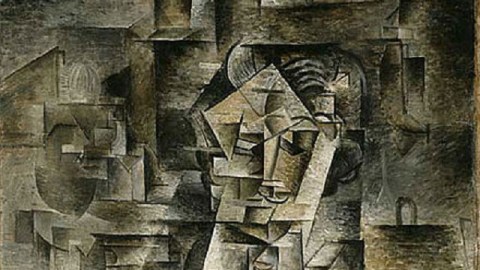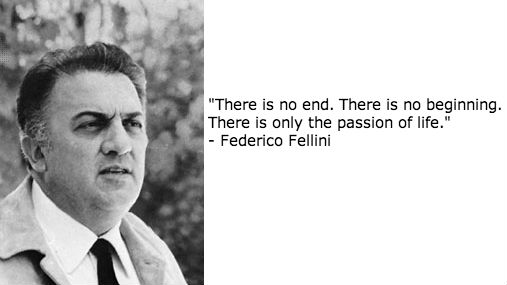Are Our Minds Wired to Enjoy Cubism?

When Pablo Picasso and Georges Braque first brought Cubism onto the modern art scene in the first decade of the 20th century, the initial reviews were mixed. Like-minded artists and art lovers embraced Cubism as a startling new way of seeing breaking violently with the representational art of the past. Many others, however, saw only madness and perhaps a little fraud in these images taking everyday objects and representing them from every angle simultaneously. Preferences for modernism or classicism certainly played a big role in responses. But what if we could wipe away those preferences? Would an unprejudiced viewer accept and maybe even enjoy Cubist paintings? A team of researchers recently tackled that question by testing whether art novices shown a series of Cubist works expressed a liking for the works and if detectablility—whether or not the viewer could visually reverse engineer the image back to its everyday source—played a role. Their results not only suggest that Cubism can be enjoyed by the novice, but that more difficult (but not too difficult) works to untangle tickle the pleasure zones of the mind. Are our minds wired to enjoy Cubism?
Claudia Muth, Robert Pepperell, and Claus-Christian Carbon published their article, “Give Me Gestalt! Preference for Cubist Artworks Revealing High Detectability of Objects” in a recent issue of the journalLeonardo, a publication of The International Society for the Arts, Sciences and Technology. (The text of the article itself is behind a paywall, unfortunately.) Taking their cue from the inspiration for their name, Leonardo da Vinci, the organization strives to use art and science in collaboration rather than in conflict. Muth and Carbon, two German psychologists, teamed up with Pepperell, a British art historian, to explore how the mind appreciates, or doesn’t appreciate, Cubism and what larger implications that appreciation might hold. They showed 20 subjects (13 women and 7 men; ranging in age from 19 to 36 years, with a mean age of 23.8 years) who claimed “no expertise” in Cubist art photographs of classic Cubist works by Picasso (47 works), Braque (33), and Juan Gris (40). The researchers asked subjects to first rate the works for “likeability” on a 7-point Likert scale from 1 (“not at all”) to 7 (“very”). Next, using the same Likert scale, they asked the subjects to rate how well they could detect the objects in the images. They found “a strong relationship between the detectability of objects within cubist artworks and liking indicated by a Pearson correlation of R=.781, p<.0001.>
Thus, as they put it, the data “show that viewers’ appreciation of cubist paintings is closely linked to the viewers’ ability to identify an object, or a Gestalt, from partial clues.” Muth et al. cite earlier theorists, such as “Van de Cruys and Wagemans [who] suggest that artworks often violate viewers’ perceptual predictions, and that they are then able to derive aesthetic pleasure from reducing the cognitive uncertainty induced by those violations.” But Muth et al. are the first to put those previous theories to the test empirically. Their findings also show a “sweet spot” where this Gestalt pleasure happens best. “Unlike images that offer effortless and determinate recognition,” Muth et al. write, “cubist paintings present the viewer with ongoing perceptual indeterminacy while offering clues to enable Gestalt recognition. Our finding of increased preference for paintings revealing high detectability of objects might then be attributable not just to the mere recognition of forms but also to the fact that recognition is occurring against a background of ongoing uncertainty.” In other words, the fact that it takes a degree of effort to work out the puzzle of a Cubist image (that “background of ongoing uncertainty”) adds to the fun. “[W]e thus propose that it is the presence of novelty, uncertainty or other challenges evoked by a stimulus that promotes dynamic aesthetic processes, not the fluency or immediacy of recognition per se,” Muth et al. conclude.
The researchers illustrate their point with an anecdote about Picasso’s 1910 Portrait of Daniel-Henry Kahnweiler (detail shown above, click on link for full image). The German-born Kahnweiler opened an art gallery in Paris in 1907 and began selling Picasso’s work the next year. Kahnweiler actually introduced Picasso to Braque, thus making Cubism possible. Although Kahnweiler essentially cornered the Cubist market from 1908 through 1915, in 1910 he rejected a series of Cubist works by Picasso because he felt they were too abstract, too hard to decipher, and thus too hard to sell. “Probably stung by this [rejection],” Muth et al. write, “Picasso quickly embarked on a major portrait of Kahnweiler [shown above]… which is notable for the reintroduction into the cubist language of much more identifiable cues about the objects being depicted. Kahnweiler soon resumed purchasing Picasso’s works, which thereafter explicitly avoided indecipherable abstraction.” Kahnweiler not only started dealing Cubist works again, but a decade later he wrote The Rise of Cubism, which helped articulate the theory behind Cubism for the general public. When Picasso’s dealer saw his own features, hair, knotted tie, clasped hands, and watch chain—all the elements of a conventional portrait—emerge from the Cubist puzzle, it put the smile back on his art-loving, profit-minded face.
The “give me Gestalt!” drive these researchers examine looks a lot like Lev Vygotsky’s concept of the Zone of Proximal Development, an idea employed often in education to maintain the proper level of challenge. Too challenging a task (understanding Picasso’s incomprehensible Cubist works) frustrates and loses the students. Too easy a task (understanding a more realistic rendering of an object) bores and, once again, loses the student. Finding the proper level (Vygotsky’s “zone,” which moves as the student develops, making it a moving target for educators) results in engaged students (or engaged and pleased art appreciators). Muth et al. raise an interesting issue and make a compelling case for the uninitiated tuning in and getting turned on by Cubism. The real question, as Vygotsky and his “zone” would put it, is whether that thrill will still be there later on.
[Image:Pablo Picasso. Portrait of Daniel-Henry Kahnweiler (detail), 1910. Image source.]





